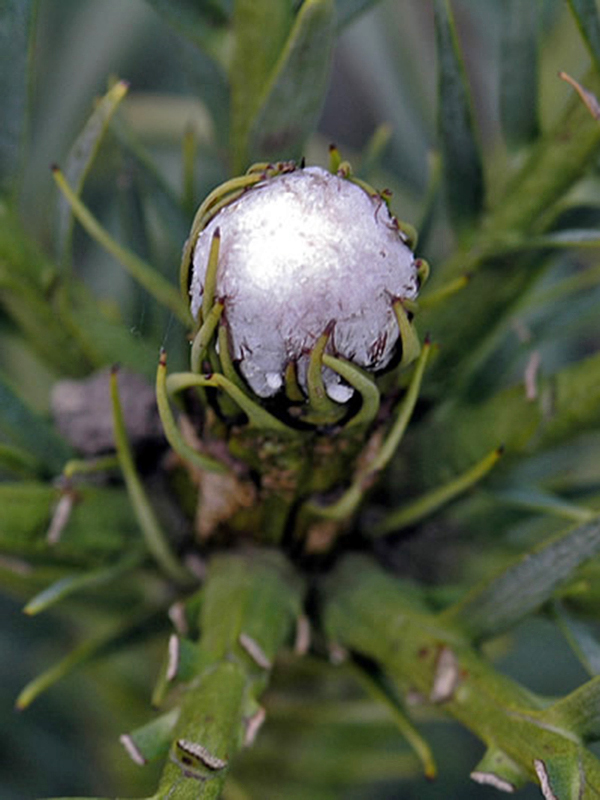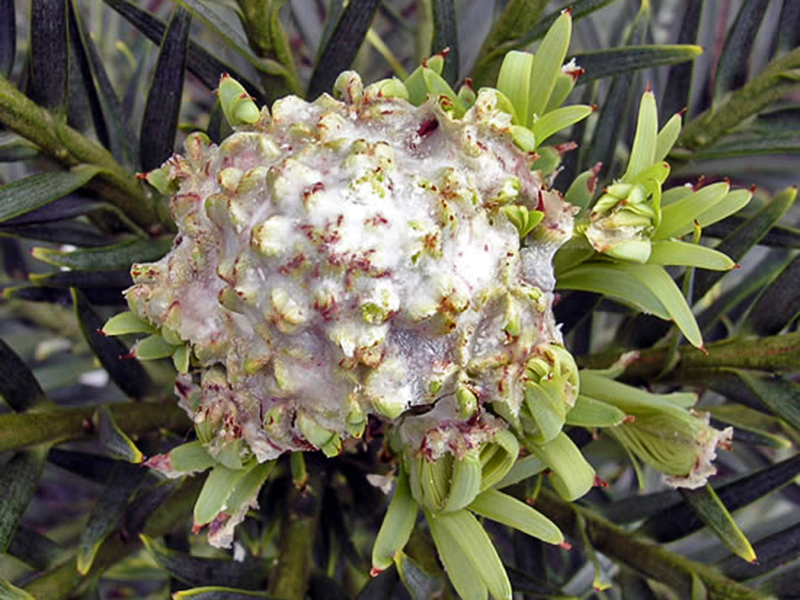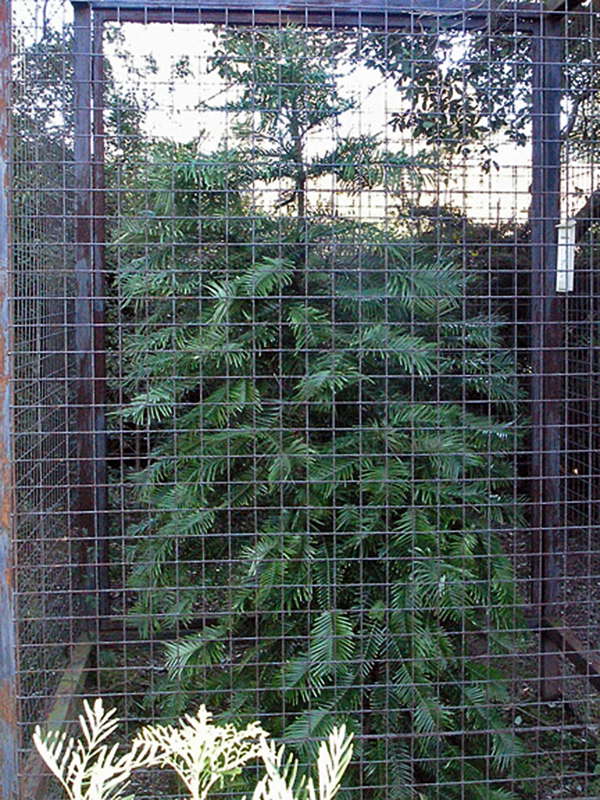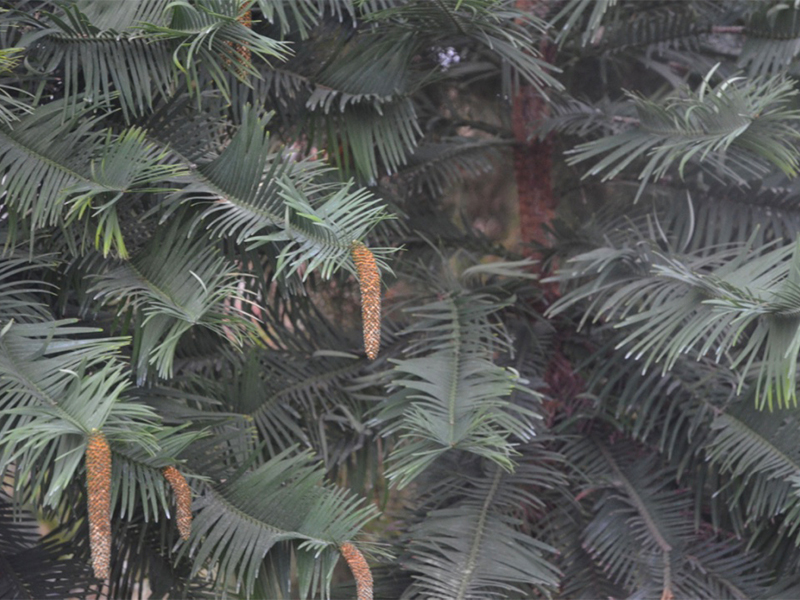
Woody > Wollemia > Wollemia nobilis > Wollemia nobilis
Wollemia nobilis
Wollemi Pine
Origin: New South Wales, Australia. This species is listed on the ICUN Red list as Critically Endangered.
| Family |
| Araucariaceae |
| Genus |
| Wollemia |
| Species |
| nobilis |
| Category |
| Woody |
| Type |
| Tree (evergreen) |
| Pronunciation |
| USDA Hardiness Zone |
| 9 - 11 |
| Canadian Hardiness Zone |
| Requires cool season protection under glass. |
| RHS Hardiness Zone |
| H1C - H4 |
| Temperature (°C) |
| -5 |
| Temperature (°F) |
| 23 |
| Height |
| 25 - 40 m |
| Spread |
| 10 - 20 m |
Photographs
Description and Growing Information
Flowering Period
| General Description |
| Upright evergreen coniferous tree. |
| Landscape |
| Indoor potted plant or potted patio plant or as a specimen plant in mild climates. |
| Cultivation |
| Best grown in full to partial sun in acidic well-drained soil. Slightly frost tolerant. |
| Shape |
| Upright conical. |
| Growth |
| Medium |
| ID Characteristic |
| Slender crown and trunk with possibility of multiple trunks. |
| Pests |
| Wollemia is susceptible to the pathogenic water mould Phytophthora cinnamomi. |
| Habitat |
| Australia, in a canyon in the Wollemi National Park. |
| Bark/Stem Description |
| The bark is very distinctive and knobby. |
| Leaf Description |
| Flat linear needles 3 - 8 cm long and 2 - 5 mm broad that are arranged spirally on the shoot, but twisted at the base to appear in 2 or 4 flattened ranks. |
| Fruit Description |
| Green seed cones 6 - 12 cm long and 5 - 10 cm in diameter that mature about 18 - 20 months after pollination. They disintegrate at maturity to release the seeds. The male (pollen) cones are slender conic, 5 - 11 cm long and 1 - 2 cm broad. |
| Colour Description |
| Medium to light green foliage. Dark brown bark and light green to reddish-brown cones. |
| Texture Description |
| Smooth. |
| Notable Specimens |
| Pinetum Park and Pine Lodge Gardens, Cornwall, England. Wakehurst Place, Ardingly, West Sussex, England. Westonbirt Arboretum, Westonbirt, England. Muttart Conservatory, Edmonton, Alberta, Canada. Trebah Garden Trust, Mawnan Smith, Falmouth, Cornwall, United Kingdom. |
| Propagation |
| Seed, tip cuttings or micropropagation. |



